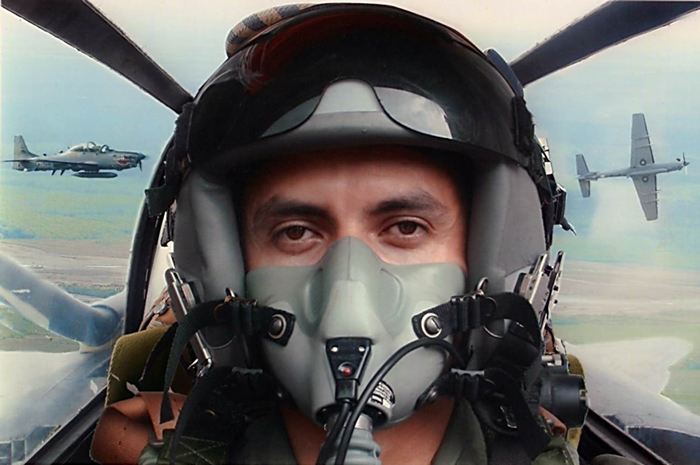Motion Sickness: Maladjustment More Than Sickness
DOI:
https://doi.org/10.18667/cienciaypoderaereo.129Keywords:
Flight, Motion Sickness, Vestibular RehabilitationAbstract
Motion sickness is a condition characterized by a group of symptoms such as nausea, vomiting, and cold sweating that occurs when a person is exposed to an unfamiliar, real or apparent, motion stimulus. It is a generic term, can be applied to the symptoms generated by movement in sea, air, car, swimming, flight stimulator, and the space. The beginning of the stimulus generated by the movement creates signals such as visual, of skin, joints, muscles, vestibular system’s receptors and gravity receptors; originating a conflict between information, causing the alteration. The treatment is based in symptoms identification, prevention of triggering and underlying factors, and movement adaptability. Motion sickness is in fact a conflict of feelings where the human body is not capable of defining and identifying the information sensed, unless it is trained to achieve a decrease in sensitivity and habituation to movement. Motion sickness more than pathology is maladjustment of the organism to the movement during flight that generates feelings which cannot be interpreted but the person can be trained to achieve control, and in such a way continue with a normal life.
Downloads
References
Benson, Alan J. (2000). Capítulo 33 Motion sickness. Operacional Aviation Medicine, pp. 455- 471. USA.
Bless, W. Bos, J. y Kruit, H. (2000). Neuro-ophtalmoloy and neurootology. Motion sickness, pp. 19 - 24.
https://doi.org/10.1097/00019052-200002000-00005
Braithwaite, M. (2004). Capítulo 8. Spatial Desorientation in Aviation, pp. 323 - 347.
Fonseca, W. (2000). Habituación sensorial con ejercicios de gimnasia en la profilaxis de la aerocinetosis de la Fuerza Aérea de Brasil, pp. 100 109.
Gans, R. (1999). Protocols and programs vestibular rehabilitation. USA.
Golding, J., y Gresty, M. (2005). Motion Sickness. Neuro-ophtalmoloy and neuro-otology, pp. 29 - 32 USA.
https://doi.org/10.1097/00019052-200502000-00007
Mudin, L. (2011). Managing Motion Sickness. BMJ, pp. 1-7 USA.
https://doi.org/10.1136/bmj.d7430
Previc, F. y Ercoline, W. (2004). Spatial disorientation in Aviation. Instituto Americano de aeronáutica y astronomía. USA.
https://doi.org/10.2514/4.866708
Reschke, Millard, F., y Harm, Deborah L. (2010). Chapter XXII Neurophysiologic aspects: Space Motion Sickness. Physiology adaptation to space flight. 3 Edition, pp. 228-255. USA.
Shopak. A, Gordon, C. (2006). Motion Sickness: Advance in phatogenesis, predition, prevention and treatment. Aviation space and environmental medicine, vol 77, pp. 1213-1220. USA.
TC. Ramírez, M.. (2001). Manual: el malestar en vuelo de la Fuerza Aérea de los Estados Unidos, pp. 79- 87. Fuerza Aérea de los Estados Unidos de América.

Downloads
Issue
Section
License
Assignment of Copyrights
Authors assign Ciencia y Poder Aéreo journal the exclusive rights (reproduction, distribution, public communication, and transformation) to exploit and commercialize their work, in whole or in part, in all the formats and modalities of present or future exploitation, in all languages, throughout the life of the work and throughout the world.
All contents published in Ciencia y Poder Aéreo journal are licensed under a Creative Commons Attribution 4.0 International License, whose complete information is available at http://creativecommons.org/licenses/by/4.0/
Under the terms of this license, users are free to download, print, extract, archive, distribute and publicly communicate the content of articles, provided that proper credit is granted to authors and Ciencia y Poder Aéreo, scientific journal of the Graduate School of the Colombian Air Force. Except when otherwise indicated, this site and its contents are licensed under a Creative Commons Attribution 4.0 International License.
For other uses not considered under this license it is required to contact the Director or the Editor of the journal at the e-mail address cienciaypoderaereo1@gmail.com.
The Graduate School of the Colombian Air Force and this publication are not responsible for the concepts expressed in the articles, including the metadata or the affiliation stated by authors. This is the full responsibility of the authors.





















